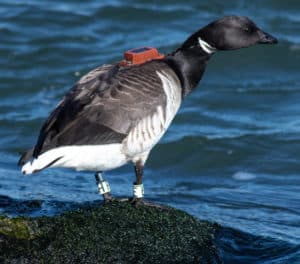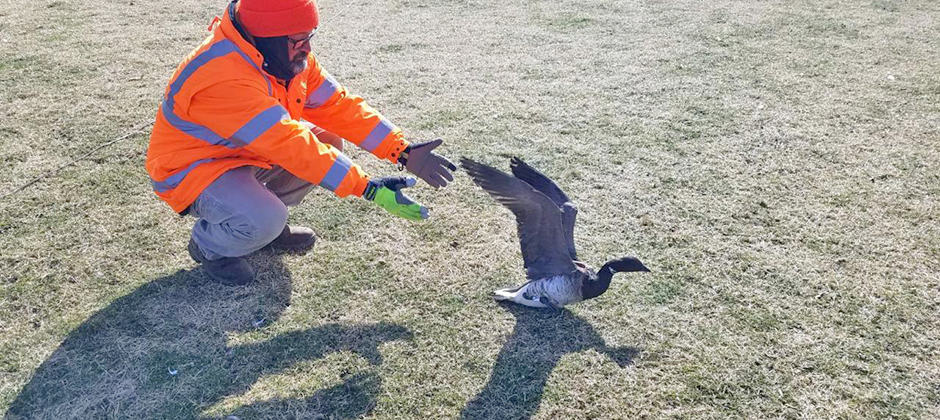Share this article
Helping band Atlantic brant in New Jersey
Wildlife Services has worked with Middlesex County Parks since 2014 to manage wildlife damage by many species. Since our efforts focus on Canada goose and Atlantic brant management, when the New Jersey Division of Fish and Wildlife wanted to band brant in the county’s Raritan Bay Waterfront Park, it approached Wildlife Services.
About 90% of Atlantic brant, which breed in Arctic Canada, winter along the coast of New Jersey and New York. After a significant population decline in the early 2010s, brant have fared better in recent breeding seasons. Because of New Jersey’s importance to brant ecology, the NJDFW initiated a five-year collaborative study with New York Department of Environmental Conservation and Canadian Wildlife Service in 2018.
As the primary wildlife specialist working with the county park, I met with Eric Gehring, Middlesex County’s open space coordinator and naturalist. The county supports scientific studies involving its parks, and I was happy to coordinate the work. Because the central New Jersey park is heavily used by the public, we discussed the logistics and quickly developed a team consisting of open space staff, a park ranger and myself to assist the NJDFW by creating a safe environment for the public, birds and officials.
With everything taken care of on Middlesex County’s end, I began working with the NJDFW toward the day of the capture. Ted Nichols, CWB ®, a wildlife biologist in the NJDFW’s waterfowl ecology and management program, asked WS to perform regular site visits to provide a count of Atlantic brant in the park and document any discernable behavioral pattern. The site surveys provided a total count, the time observed, whether high or low tide and location within the park.

A released Atlantic brant appears with leg bands and a geolocator. ©NJDFW
With a week’s worth of site surveys, the NJDFW set the operation for Feb.14. On capture day, the county’s open space team and park ranger established a perimeter around the field, keeping park visitors and workers at a distance to avoid spooking the birds and keep them safely away from the net launcher we were going to use for capture. Ideally, the cold windy day minimized park visitation and moved birds to the uplands. Working at high tide maximized birds, which would be on tidal flats at low tide.
The NJDFW slowly and successfully pushed the birds within reach of the rocket net. The Raritan Bay Park brant, habituated to human interaction and WS harassments, are tough to disperse once they’ve chosen a field. After the launcher was deployed, the NJDFW, the open space crew and I began untangling 92 birds from the net, crating and moving them to the onsite banding station.
We assisted the NJDFW in processing. Each bird was measured, weighed and given different leg bands —the federal metal bird band and a pair of colored bands, one on each leg, for the Atlantic brant migration study. Other birds received geolocator leg bands. The six largest males were outfitted with GSM-GPS transmitter backpacks. After each bird was processed, it was released onsite to continue on its way, all with no issues.
WS was honored to play a small part in the project, which has now banded over 2,400 brant over three winter and two breeding seasons. For more information, visit Brant Study 2019.
Header Image: A Middlesex County employee releases one of 92 captured and banded brant. ©Middlesex County via USDA








